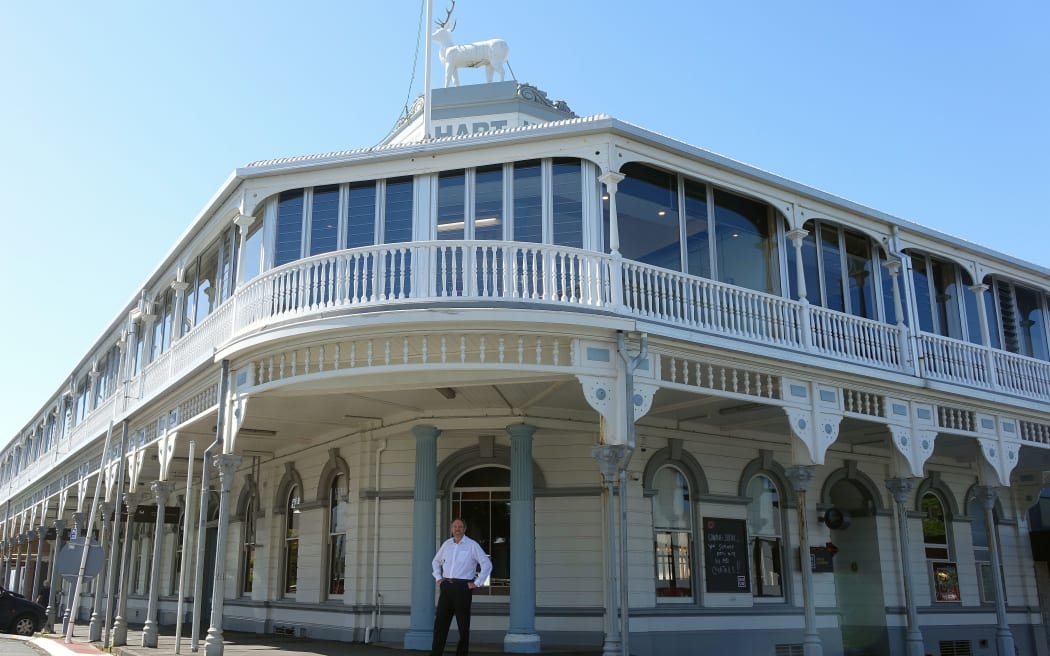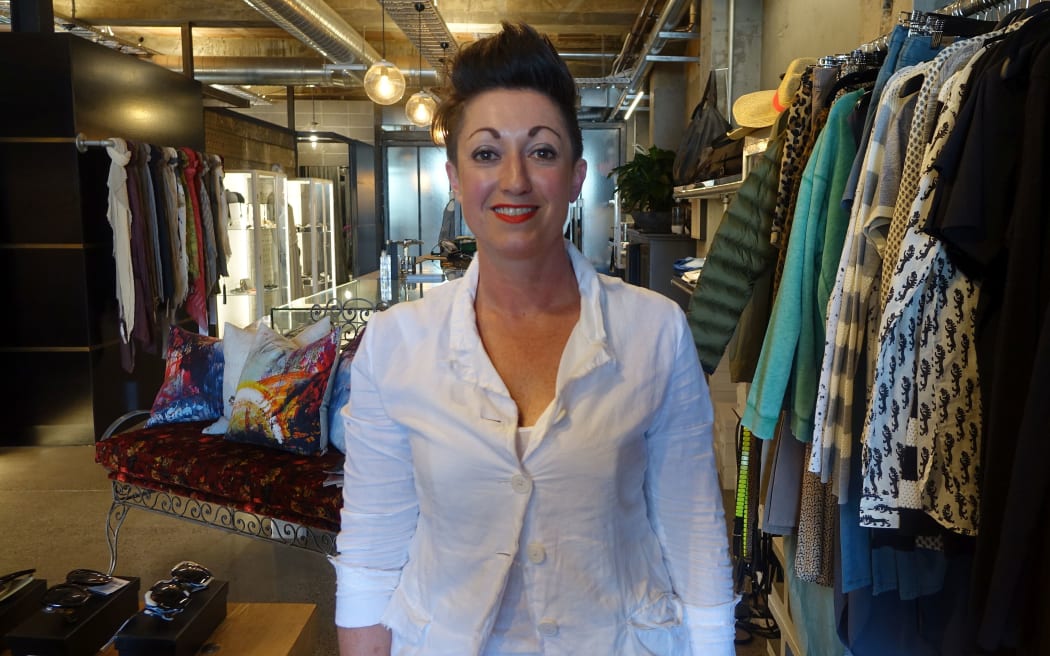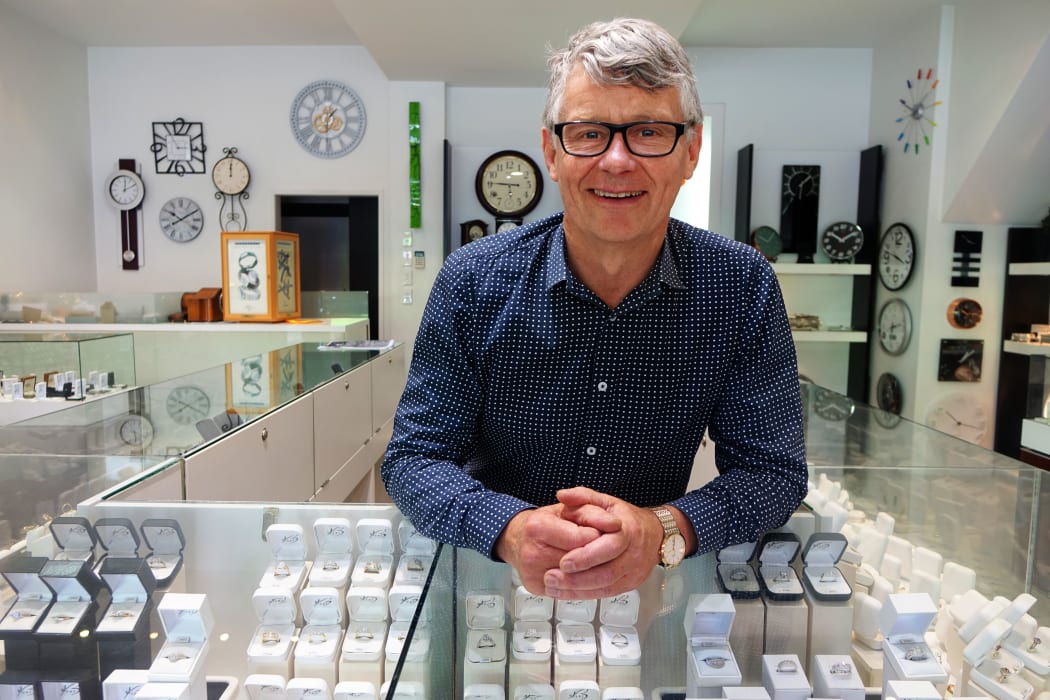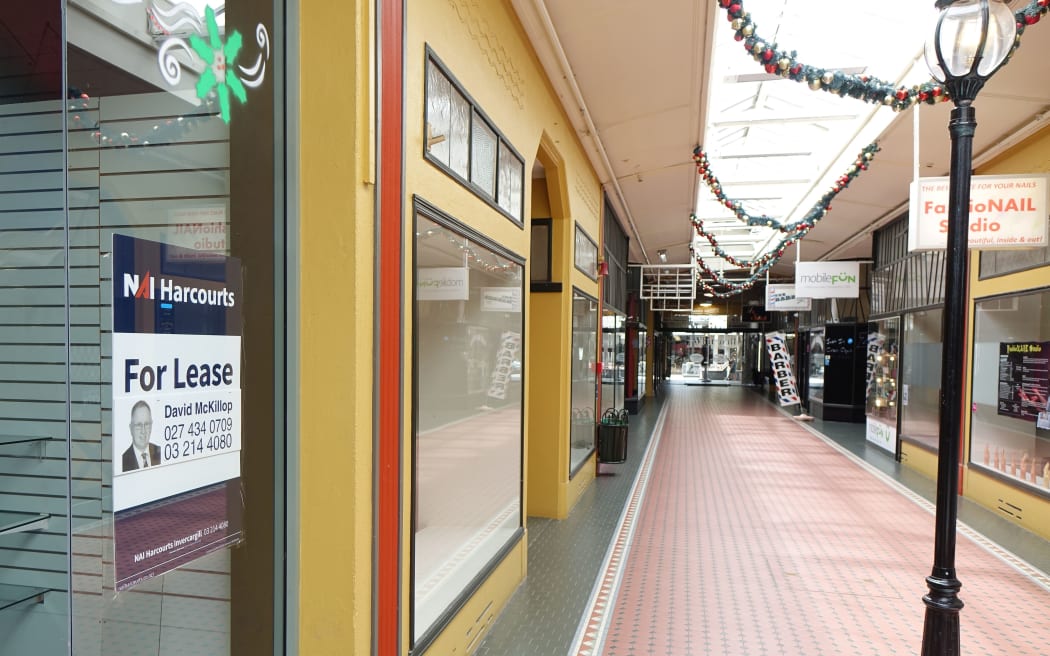This year has been buoyant for many of New Zealand's shop owners and CBDs, with growth in sales and big international players such as Topshop and David Jones causing a buzz on the high street.
It's quite a turnaround from the days when experts were predicting online shopping would swamp brick-and-mortar stores.
But, despite the Christmas spirit, not everyone is optimistic, as smaller centres struggle with declining populations and, sometimes, declining economic fortunes.
Can lessons be learned from those that have turned their fortunes around?

Taranaki Chamber of Commerce CEO Richard Williams stands outside the redeveloped White Hart. Photo: ( RNZ / Robin Martin )
A pub full of memories but on the verge of collapse: The White Hart Hotel was built in the early 1900s, but more than a century later the heritage building was derelict. Enter a new arts building, the Len Lye Centre, and destination shopping, and the sweeping wooden building was transformed.
Now, a high-end boutique, Et Vous, fills the public bar where bikies once drank and fights were apparently routine.
It's the sort of solution experts are suggesting to turn around dying regional or suburban centres. Find a point of interest, and develop a niche.
Et Vous owner Kate Macfarlane says her clients are supportive of having one of New Plymouth's oldest buildings saved and used for a new purpose. A visit is now a shopping experience associated with entertainment, in the form of the new arts centre, and the hospitality of a bar and hotel, she says.

Taranaki boutique owner Kate Macfarlane says great efforts were made to keep the authentic interior as part of the shopping experience. Photo: ( RNZ / Robin Martin )
The retail picture nationally is robust. Official figures have shown strong retail growth over the last year. The most recent numbers, for the three months ending in September, indicate an annual growth rate of 5.1 percent.
But the picture is mixed according to the organisation representing shop owners, Retail NZ.
"We're seeing similar results across different parts of the retail sector; the biggest differences are really regionally based. Heartland New Zealand is finding it a little harder than urban New Zealand," Retail NZ's head of public affairs, Greg Harford, says.
"High streets have got a really important place in the heart of the community and there's always going to be a place for bricks-and-mortar retail. But we are seeing change. Physical stores are becoming smaller, becoming a bit more boutique and focused on particular niches."
But Greg Harford emphasises the importance of retail to the economy overall.
"Retail is huge to the New Zealand economy. There's about $80 billion worth of turnover in retail every year. That's about 2.5 times the size of the tourism sector."
Having a vibrant town centre is more than an economic matter but also a sign of how well the community is doing.
Chris Wilkinson heads a consultancy that comes up with ideas on how to reinvigorate local shopping areas.

First Retail's Chris Wilkinson says keeping a vibrant town centre is a social and commercial plus. Photo: ( Supplied )
"Many elected councillors and their officials aren't aware of the challenges local businesses are facing and this has meant retail hasn't been prioritised, yet the town centres and CBDs are very much the heart of their communities.
"When you have decay and challenges going on in your CBD, that affects commercial confidence, influences whether people want to live there and significant social issues can emerge."
He is one of those who is optimistic that solutions can be found, and advocates for concentrating on a small area for improvement, collaborating to achieve it - and finding that point of difference.
Not all parts of New Plymouth have managed to carve out a niche.
Ross Byers has successfully run his business in the city for 40 years, selling and repairing watches and jewellery. In that time, he has seen neighbouring retailers close down and move out.

New Plymouth jeweller Ross Byers is among the last survivors in his direct area, he says. Photo: RNZ/Robin Martin
He put his survival down to creating a business that combines service and retail, in his case the repair side along with clock and watch sales. He buys his own stock and can offer something different to what he says is the formulaic offering that can come with chain stores.
"Everyone needs to have a bread and butter earner and for the jewellers in town that's repairs," he said.
Much further south, Invercargill has just launched a Southland development plan and is looking at what can be down with a town centre plagued by vacant shops - and a shopping area that has sprawled.

Empty shops in an Invercargill arcade: Many of the landlords are from out of town, and there are concerns more could be done to fill vacancies. Photo: ( RNZ / Ian Telfer )
Invercargill's city centre co-ordinator, Kari Graber, says many shop owners are struggling.
"Overall the feeling is that it's tough. Everyone I've talked to over the past two years has said that sales are dropping and it's consistent. Each year it's gone down more and there's no sign of a recovery, and that's the scariest thing. They are pretty much at their wits' end and don't know what to try."
There are a multitude of challenges facing Invercargill's retail sector, including an abundance of run-down heritage buildings that it would be expensive to upgrade and earthquake-strengthen.
Many shop owners still haven't embraced the digital world and don't have a website or a Facebook page, let alone online sales.
But Ms Graber is still optimistic.
"There's a big drive by the entire community to get the city fixed. They are not proud of what the city looks like now... There is a disconnect with having things so spread out. We need to bring it in," she says.
"A city is like a heart. If you get your heart strong, then the blood will flow, and people are now thinking maybe we do need to get the heart strong and worry about the surrounding outer areas later."


